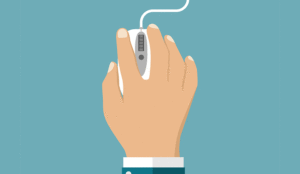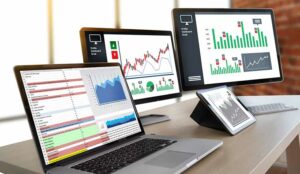We have asked a range of industry experts for their key suggestions on what to look for when buying a speech analytics solution.
With 31 per cent of Best-in-Class organisations in the US having implemented speech analytics, the trends show we are on the threshold of the move from the early adopter stage into the early majority as a mission-critical solution. With this emergence comes the need to understand better what’s on offer.
When looking at a speech analytics solution, product features are not the place to start. It is crucial to grasp what relevant business benefit(s) the solution will be able to deliver and at what cost. Key factors include:
Speed to business insight
A key consideration when selecting a vendor is the speed to business insight. How long will it take them to process your audio? How soon can you expect to see results? How quickly can they drill down and accurately clarify your core problems across all your agents? Listening to thousands of hours of recorded audio shouldn’t take thousands of hours. Large call centres with hundreds of agents making thousands of calls per week should expect to get deep and meaningful intelligence within hours or a few days.
Intuitive reports easily understood by senior executives
A speech analytics solution needs to be able to summarise and consolidate large volumes of data, it needs to be scalable to your particular requirements, and be able to present the results in a visually intuitive format that can be easily understood by call centre managers or senior executives across the enterprise.
Low risk entry level – flexible deployment options
When evaluating any new form of technology the entry-level cost and total cost of ownership (TCO) need to be considered very carefully. It is important to be able to evaluate the potential return on investment, possibly with an initial engagement that can understand the issues and deliver short-term results. This will enable you to build a compelling business case prior to any buy-in and roll-out of the product.
Flexible deployment options such as a hosted or on-demand solutions could give you all the benefits of powerful analytics while eliminating expensive hardware costs.
Professional services
With any emergent technology, the skills needed to maximise its use are not in-house. The ability to turn detailed call analytics into meaningful business insight is a developed art. It is vital, therefore, to ensure that the vendor chosen will be able to work alongside your team, combining analytical skills with your business knowledge to deliver meaningful business intelligence that will drive effective organisational change. These skills will ultimately need to be brought in-house, so that speech analytics can deliver ongoing insight and value.
Accuracy and reliability
The solution needs to offer a high level of accuracy. By ensuring that the software you select has a high recognition rate you will be able to measure effectively both the level of emotion of the caller and the agent. The contact centre can select the words which the software recognises, including positive words that signal a caller’s intent to purchase or words which suggest the caller is dissatisfied, such as swear words.
Real-time responses
It is also important to select a solution that allows you to analyse calls in real time. This means that any customer grievances can be flagged to a supervisor and resolved immediately, helping to achieve first-call resolution and increase overall customer satisfaction. Those solutions that analyse calls retrospectively are only able to identify problems once the caller has left the system, by which point they may already have decided to purchase from a rival supplier.
Real-time response offers a number of benefits to the contact centre. For example, if a customer displays buying signals, a pop-up script can be enabled on the agent’s desk prompting them to close the sale. In addition, supervisors can also make use of the whisper function, either to advise agents how to finalise a sale, or to offer guidance through a difficult call. In the most severe cases, an alert can be sent to a supervisor to intervene in difficult calls to resolve the situation.
Configuration and cost effectiveness
The final thing to consider is the ease with which the product can be configured, as this will have considerable bearing on the cost effectiveness of the solution. By choosing a solution that can be configured by those within the contact centre you cut down on administration costs as well as making it easier to react to ever-changing business circumstances.
If a speech analytics solution can provide accuracy, real-time intervention and a cost-effective solution then it can help firms to increase customer satisfaction and reduce their churn, something which is pertinent in today’s economic climate.
Flexibility and power of search
With many companies having thousands, if not millions, of calls the main requirement is the ability to search for individual or groups of calls that match certain search criteria. There are two fundamental search techniques; one that is based on word or phrase recognition, and more advanced systems that use phonetic search techniques. The latter has the distinct advantages of being more flexible, quicker to set up and search times tend to be faster. On top of basic search facilities, nice-to-have features include the ability to recognise tone and speech volume, to recognise calls during which the caller becomes angry, for example.
Analytics and presentation capabilities
As well as identifying individual or groups of calls, it is important to identify patterns and trends. Coupled with root-cause analysis techniques, these allow companies to go beyond picking out calls and begin analysing common causes of calls and frequent content. These can be used to identify the need to change back-office processes that result in unduly high volumes of calls. As with any other analysis applications, the system should be capable of producing the results in highly graphical formats that make it easy for users to grasp what is going on.
Drill down
Although most users begin by using graphs and other presentation formats, many end up wanting to drill down and extract individual calls that form part of a segment of a high-level representation. The solution should therefore allow users to click on a segment of a pie-chart, for example, and automatically be presented with the call recordings that went to make up that segment.
Make it easy
Speech analytics solutions should be designed from a business perspective, so that business users can use them without the need for support from the IT department or the supplier. Solutions should provide out-of-the box results, wizards to support analysis and a user-friendly interface. Users should have the flexibility to customise their speech analytics dictionaries, and tune them to their own specific business conversations without the need for specialist software support. The capability to add words/terms that are unique to your conversations will become increasingly important – for example a solution for a UK mobile phone provider would need to be able to recognise common words such as O2, Orange or Vodafone.
‘Tell Me Why’ / root-cause analysis
The ability to easily identify issues you didn’t even know to look for. “Tell Me Why” identifies key drivers of long calls, repeat calls and other costs and satisfaction drivers, leading to identification of process improvement opportunities across all agents, enterprise wide. This gives users the ability to mine their interaction data, group calls by their category and frequency, and then establish the root cause of their calls.
Show me what
A key development in the latest speech analytics solutions is the ability for organisations to look at the entire transcription of each interaction. Rather than just focusing on the phonetics or keywords offered by more traditional solutions, this broader analytic capability allows organisations to quickly identify trends as they happen, and effectively gives a business the opportunity to uncover answers to questions that they weren’t initially searching for. This new approach allows analysts to automatically ‘surface’ significant events as they occur – for example a notebook PC manufacturer might learn about a potentially costly series of overheating battery complaints, and remedy the issue more quickly than if the problem had been routed through normal customer-service channels. Similarly, a financial services firm could learn about customers defecting to a rival with a more competitive interest rate offering faster than traditional methods.
Speed and scalability
The ability to process vast amounts of data very quickly is key. Businesses running call centres with thousands of agents taking millions of calls every week need an ‘industrial strength’ system that can analyse huge call volumes and give meaningful results in a business-intelligible format very quickly with a high level of accuracy.
Fast ROI
In our experience, clients are less concerned about the price of a particular solution than its ability to deliver a fast return on investment. For example, one of Nexidia’s current speech analytics solutions offers ROI time frames as short as 6-12 months. This entails an initial proof of concept and 3-6months quick-start implementation identifying quantifiable business benefits – crucial for keeping C-level executives engaged in the project. The ability to offer a hosted solution, which minimises capital outlay and system reconfiguration, is also invaluable for a number of clients.
Proof of concept and quick start to quantify benefits first
This modus operandi means that customers can try out the solution first on an initial project and can quantify the significant benefits before full buy-in and roll-out. The Operations Director of a large utilities company, for example, recently expressed an interest in using the speech analytics system for three months, processing the data, extrapolating the results, then halting the system to implement business changes for six months, then switching it back on again to clarify further changes necessary. This pragmatic approach is very reflective of the needs of the marketplace.
Ensure a low-cost pilot can take place
One of the key items that came out of the Professional Planning Forum’s Strategy Network for senior planning managers on speech analytics last year was that ROI was so difficult to prove. Our voice was heard, and many providers now offer low-cost proof of concept packages utilising hosted technology. This can allow you around 3 months of usage, enabling you to collect enough data to enable a robust sample size to verify your assumptions around ROI. A flat fee per month is usually levied dependent on the hours of data captured rather than being tied into long-term licensing agreements.
Reporting engine
Using speech analytics technology will enable you to gather a massive amount of data. However, the key to this technology is how this data can be sliced and diced to discover the underlying trends and identify broken processes and new opportunities. Make sure the analytical tool is up to the job and comes as part of the technology and that relevant training and support will be available from the vendor. Also, remember that technology on its own will not solve the problems; it is just an enabler. The people and structure you put around it will determine the success of the technology.
Ease and timeliness of data
Whilst the main reason for speech analytics is to fix those big strategic problems, you also need a solution that can help you pinpoint issues as they happen. You want to be able to get to the data quickly and easily and be sure that it will give you the information needed to allow you to know exactly why you have a jump in customer demand and enable you to take relevant action. Do not miss this when sourcing your solution.
Automatically identify call types
Current-day speech analytics are able to actually listen to the call, recognising specific words and phrases. Some systems compare certain recorded words against the call itself, and then list those specific calls in a database. Others actually listen to specific phonemes (the building blocks of every word in the English language) and structure the specific words. From there, following specific business rules set by the customer, it allows them to report on the findings, and conduct specific actions. This information is then stored for all of the business to act upon.
Typically it can begin with simple words which represent certain categories within your business. For financial services, it could represent words like “transfer” or “loan”, for holiday companies it could be words like “price” or “get a quote”. Something as simple as identifying call types at this stage can quickly deliver productivity benefits in the form of removing call result codes. No longer will agents need to actually key in cryptic codes to identify call types, it will automatically be done for them.
Call categorisation
The ability to recognise specific words, names or phrases and to automatically categorise them. A good solution will be able to multi-categorise a call (e.g. a transfer and a standing order). The solution should be required to capture and categorise 100 per cent of the calls.
Multi-language support
Does your business require multi-lingual support? And also, how well does it support accents and dialects in your local language?
Measurements
How in-depth are the reporting capabilities? Can it conduct root-cause analysis for you automatically (e.g. identifying a defect in a particular product)? How easy is it to run ad hoc reports and measurements?
Security
This is essential. Ensure that it conforms to AES/RSA standards. Check the access services to certain reports and that they can be based on username, IP address, etc., as well as producing an audited log of access and reports.
Dictionary maintenance
Depending on the method used to listen to the call, the dictionary may need to be updated in order to include new words, names, etc. Determine in advance how much can be done at the user level and when you may need to go back to the manufacturer.
Recording devices
If you already have call recording in your business, how well do these services integrate into your existing infrastructure? Can the solution span across multiple devices and sites?
Platform
Make sure that the platform itself is resilient and that it provides options for redundancy. For hosted solutions, check the owner status. Does the provider lease it from someone else or do they own it outright?
Search accuracy
Ensure that your data can achieve an 85 per cent or higher accuracy rate for words and phrases. Remember that the accuracy will vary based on the equipment used and the call quality. What is the process and precision with words or phrases it does not understand?
Hidden insights
Speech analytics, also known as audio mining, finds hidden insights, implicit customer needs and wants, and the root causes of issues embedded in conversations. It can monitor how well agents comply with scripts and/or regulations. Speech analytics tools convert the unstructured data collected during a call and transform it into searchable content. For example, you may wish to search on phrases like “cancel my account.” More advanced tools can detect emotion and highlight trends without manual searching.
Concepts and trends
Some speech analytics applications can also detect concepts and trends that contact centres never even knew existed. This enables contact centre managers and executives throughout the enterprise to address the issues that generate call volume and identify competitive challenges and new revenue opportunities. By recording all interactions using quality monitoring, contact centres can then run the speech analytics tools on those recordings to look for particular patterns or repeated words that customers are using throughout the calls, such as “wished” or “broken” or competitor’s names. Coupling speech analytics with call recording helps contact centres easily identify required fixes for product offerings or business processes.
Further Reading
- Beginners guide to Speech Analytics
- Speech Analytics Case Studies
- Typical uses for Speech Analytics
- Speech Analytics Vendors
Contributors
- Jonathan Wax – Nexidia
- Dave Pauling – Interactive Intelligence
- Richard Snow – Ventana Research
- Richard Ray – Verint Consulting
- Stephen Sawyers – Business Systems
- Gene Reynolds – Blackchair
- Anita Marsh – Aspect Software
Author: Jonty Pearce
Published On: 14th Mar 2010 - Last modified: 4th Jan 2023
Read more about - Technology, Alvaria, Business Systems, Genesys, Nexidia, Speech Analytics, The Forum

















